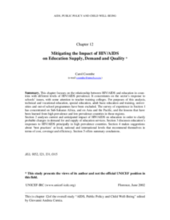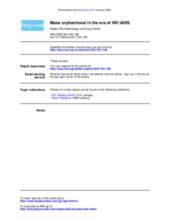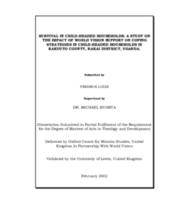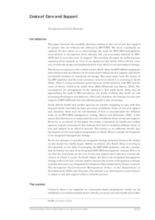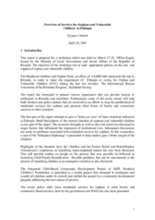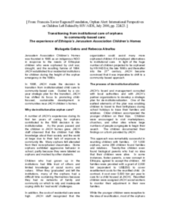Displaying 391 - 400 of 413
Documents the nature of sexual abuse against girls in Zambia, why it continues to happen, and the links with HIV infection. Outlines policies for prevention and details what each relevant organization on the ground is doing (or not doing) to address the problem.
Outlines the relationship between HIV/AIDS and education in order to clarify probable changes in demand for and supply of education services. Includes a discussion of responses and best practices.
A brief editorial which argues that only by addressing the fundamental causes of the HIV/AIDS epidemic, such as poverty and social exclusion, will a sustainable solution be achieved. Support for extended families and education for children affected by HIV/AIDS are needed to respond the crisis, as well as a larger scale effort to transfer resources, strengthen economies and secure investments throughout Africa.
Brief overview of successes, challenges, threats and programmatic best practices in addressing the needs of children affected by AIDS.
This paper presents a study in Uganda on the effects of NGO interventions, and focuses on coping strategies in child-headed households (CHHs) and on community support systems.
Outlines links between HIV/AIDS and armed conflict, with emphasis on their joint impacts on children. Summarizes key priorities for dealing with HIV/AIDS, children, and conflict.
Discussion of the cost of care and support for children affected by HIV/AIDS in South Africa, with a recommendation for the combined use of state based interventions and community based solutions.
An account of the massive child welfare crisis in Romania which erupted from a movement in Romania during its communist regime to institutionalize thousands of children. This paper also reports the efforts of NGO’s, PVO’s and the international communities to reverse the damage after the fall of communism and also where the efforts need to be directed.
A report on a workshop that was presented in Rwanda that sought to share the experiences of of Ethiopia in caring for orphan and vulnerable children. The aim was to provide lessons to colleagues in Rwanda and elsewhere. The report includes statistical data, information on reunification programs, and reviews recent government and NGO policy shifts.
An account of Jerusalem Association Children’s Homes’ work involving deinstitutionalization of orphaned children in Ethiopia. The report is a summary of the steps taken by this organization to reunify/reintegrate the children into their families and society and some next steps are also mentioned.


